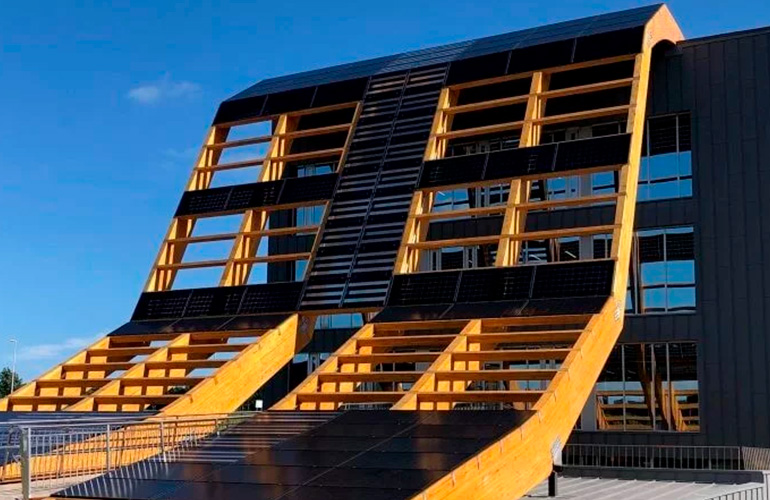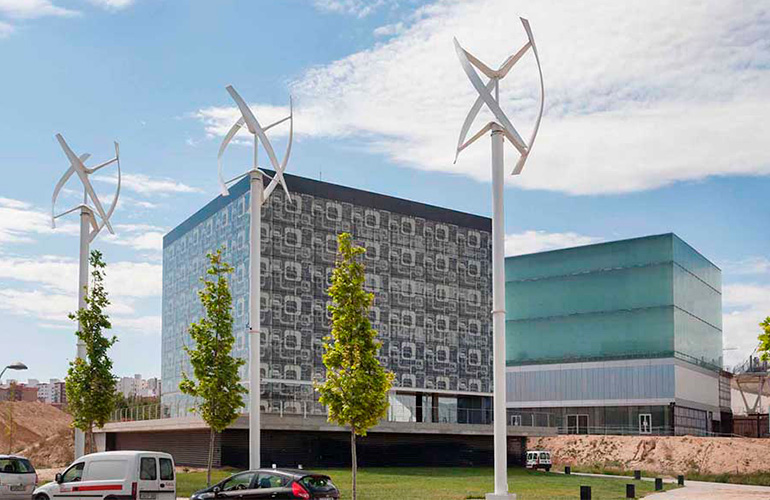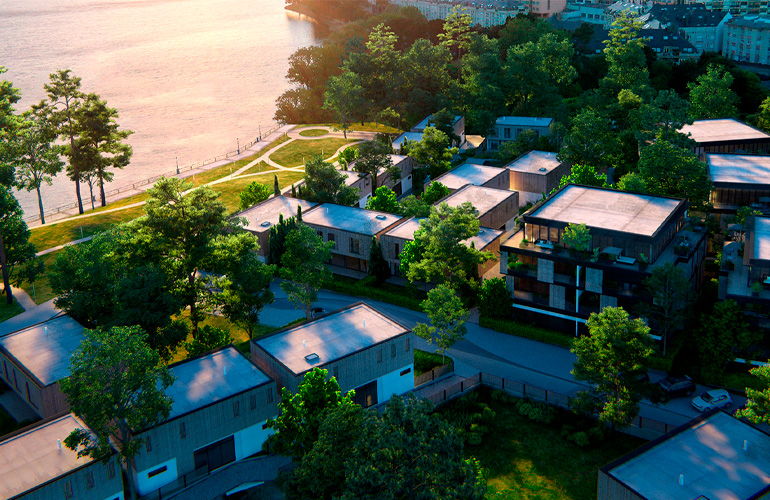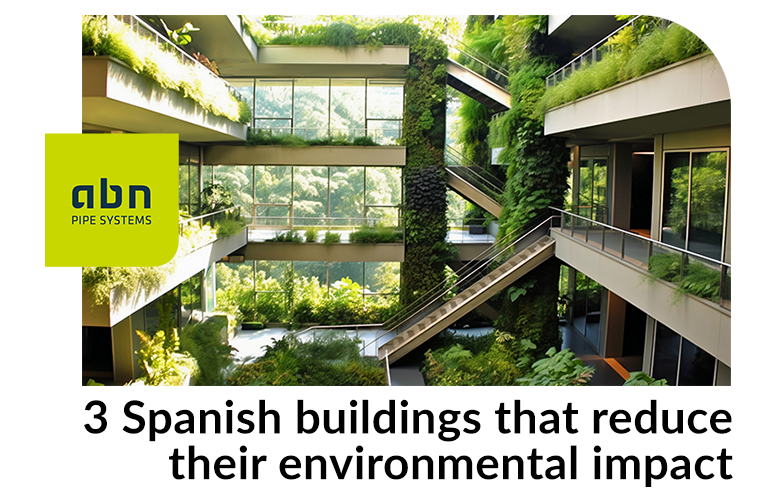The construction industry plays a crucial role in the economy, but it is also responsible for a significant part of the impacts on the environment: the depletion of natural resources, the emission of greenhouse gases or the degradation of the natural environment.
Thus, sustainable construction is a building model that not only meets our present needs, but also aims to protect and preserve natural resources to ensure a better future.
In this sense, it offers a holistic approach from planning to implementation of projects, with a view to minimising their environmental impact and maximising their contribution to the well-being of communities.
Certifications for sustainable buildings
Preserving the planet is the main benefit of sustainable construction, but given its implication for human well-being, there are many more reasons to promote this model.
Buildings that guarantee eco-efficiency standards and meet sustainability requirements achieve verification seals such as:
- LEED (Leadership in Energy & Environmental Design) is an internationally recognised certification system for sustainable buildings, which classifies them according to their degree of excellence.
- BREEAM (Building Research Establishment Environmental Assessment Methodology) is a methodology for assessing and certifying the sustainability of buildings which, like LEED, covers the different phases of design, construction and use of buildings.
- Passivhaus is a building standard that combines high indoor comfort with very low energy consumption, thanks to maximum care of the building envelope and a controlled ventilation system.
Here are three different projects that not only promote sustainability, but are also sources of inspiration for professionals in the sector who are in the process of adopting more planet-friendly practices.
Greenspace
The Greenspace, located in the Gijón Technology Park, is one of the most efficient buildings in the world. It is a smart, bioclimatic office block that generates more energy than it consumes, discharges excess energy to the grid, captures rainwater for reuse and monitors its electricity consumption in real time.
Its design features a wooden photovoltaic pergola on the outside as its main distinguishing feature: it is an installation of panels that generate energy and provide shade for the building’s south façade.
It has an air conditioning installation based on the generation of thermal energy by means of a heat pump with an automatic recovery system that distributes the surplus heat to the areas of the building that need it most.
In addition, it combines the use of underfloor heating on the lower floors and active floor slabs on the rest of the floors. This system consists of inserting water pipes into the concrete slab itself, thus taking advantage of the thermal inertia, reducing the use of air conditioning equipment to a minimum and saving energy and money.
The building, which has 1200 square metres distributed in basement, ground floor, two upper floors and roof, was the first in Asturias to receive LEED Gold certification, which recognises green and sustainable building design.

Zero Emissions Building
The Zero Emissions Building is a project developed by Zaragoza City Council and fully funded by the Spanish Government through the State Fund for Employment and Sustainability (FEESL).
It has been designed following bioclimatic parameters that allow it to achieve a net balance of emissions close to zero.
The installation that regulates the temperature takes advantage of the free resources offered by the subsoil, geothermal energy, and by water, which comes from the Ebro from a depth of 25 metres and therefore at a constant temperature of 14 or 16 degrees.
All the energy it consumes in a year comes from renewable energies thanks to the installation of three wind turbines and solar panels, with a production capacity of 83,500 kilowatt hours per year. In addition, it has the capacity to feed 27,000 kilowatt hours per year of surplus power into the grid.
It has 5 floors, with a total floor area of 2,100 m2, and was conceived as an incubator for companies specialising in information technology, audiovisual content, multimedia, video games and design in the field of innovation and creativity in research and development, water and renewable energies or advanced services in the aforementioned sectors.

Paraíso Oleiros housing estate
This is a group of luxury villas located in Perillo, bathed by the O Burgo estuary and surrounded by green spaces. This development was the first in Galicia to obtain the Breeam certificate of environmental sustainability.
Its promoters were guided by three parameters: sustainable construction, respect for the environment and energy efficiency. Thus, this development generates practically all the energy it consumes thanks to geothermal energy, aerothermal energy and photovoltaic panels.
In addition, when the household’s consumption falls short of energy production, the surplus is sold to the general grid. This feature, together with the installation of highly efficient household appliances and less energy-consuming taps, achieves an 80% improvement in the Energy Efficiency Index compared to a conventional home.
The urbanisation is an enclosed area with controlled access of 5,000 m2 for communal use, with two swimming pools, paddle tennis court, gymnasium and social room.

Importance of a sustainable future
Several of the fields determined by the requirements of this type of building are architecture and the other disciplines involved not only in the design of the building and its construction but also in the life cycle of the building and the energy used to power it.
In this case, it is important to take into account the new forms of building and the regulations that protect and promote them, such as the EECN and Architecture Quality laws.
Nearly Zero Energy Construction (NEE) imposes a new way of building, away from manufacturing cost savings and more focused on environmental friendliness and energy savings. Some of its bases are:
- Buildings should have very high energy efficiency. Materials and ventilation systems have to guarantee this almost total supply saving.
- User comfort must be ensured by comfortable indoor temperatures without the use of traditional air-conditioning systems.
- CO2 emissions have to be reduced to almost zero, as this is the EU’s main strategy to combat climate change.
This is the case of Law 9/2022 of 14 June on the Quality of Architecture SP/LEG/37672, to consolidate “a new model of economic, energy and ecological transition that promotes greater inclusion and social cohesion” in public administration buildings. In this sense, it promotes a more sustainable model for the immediate future of the construction of these buildings, although there is still a long way to go to ensure global sustainability.
